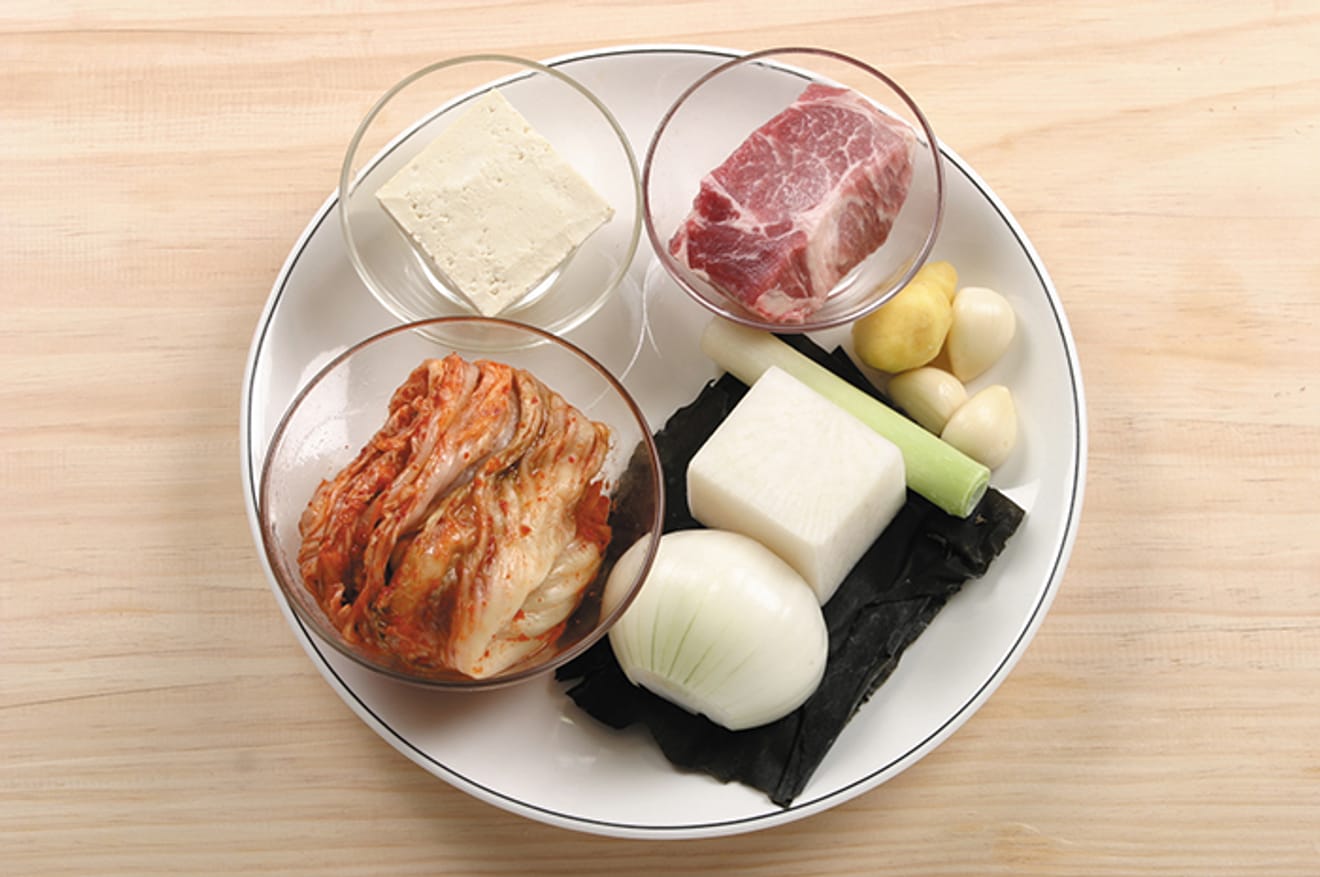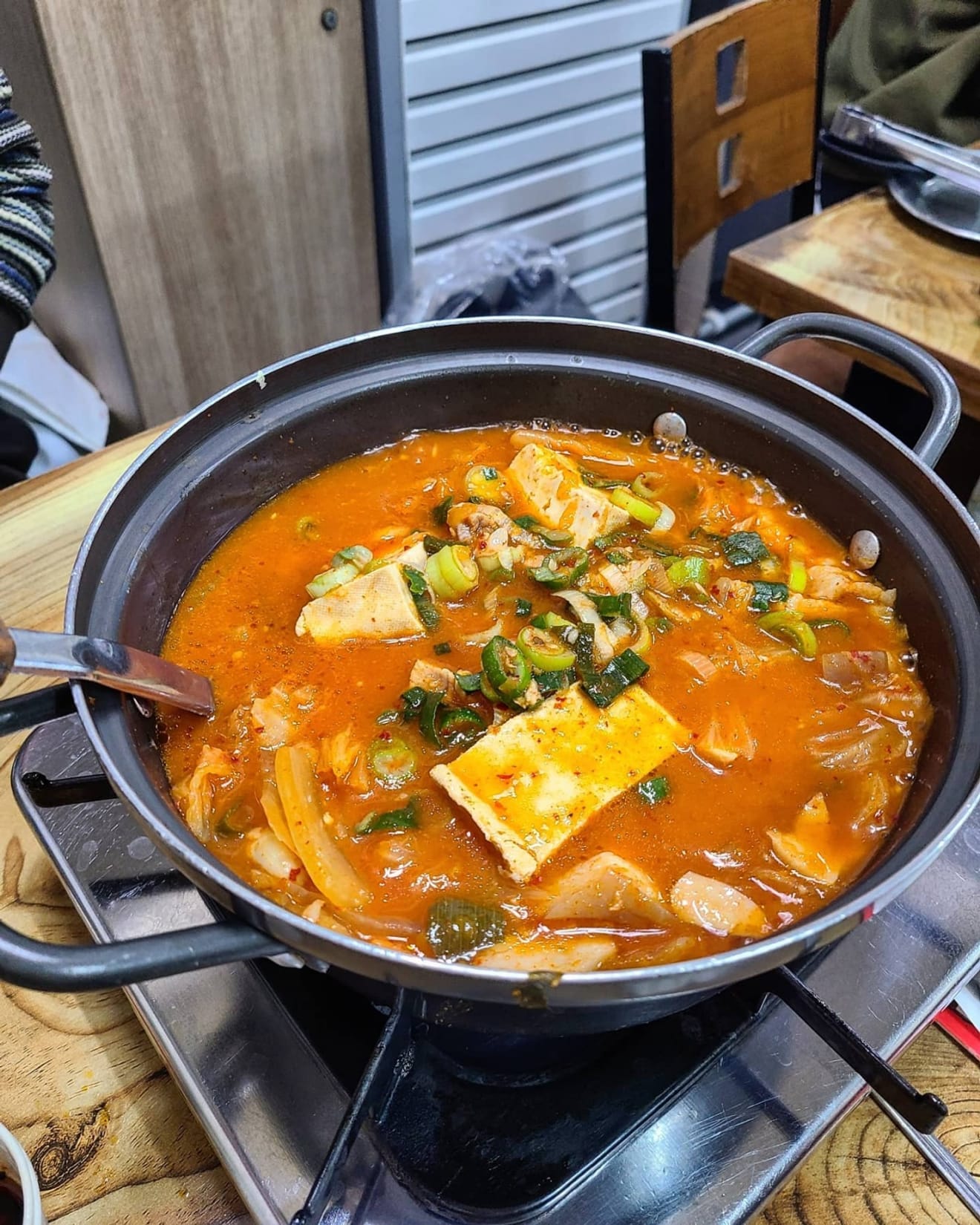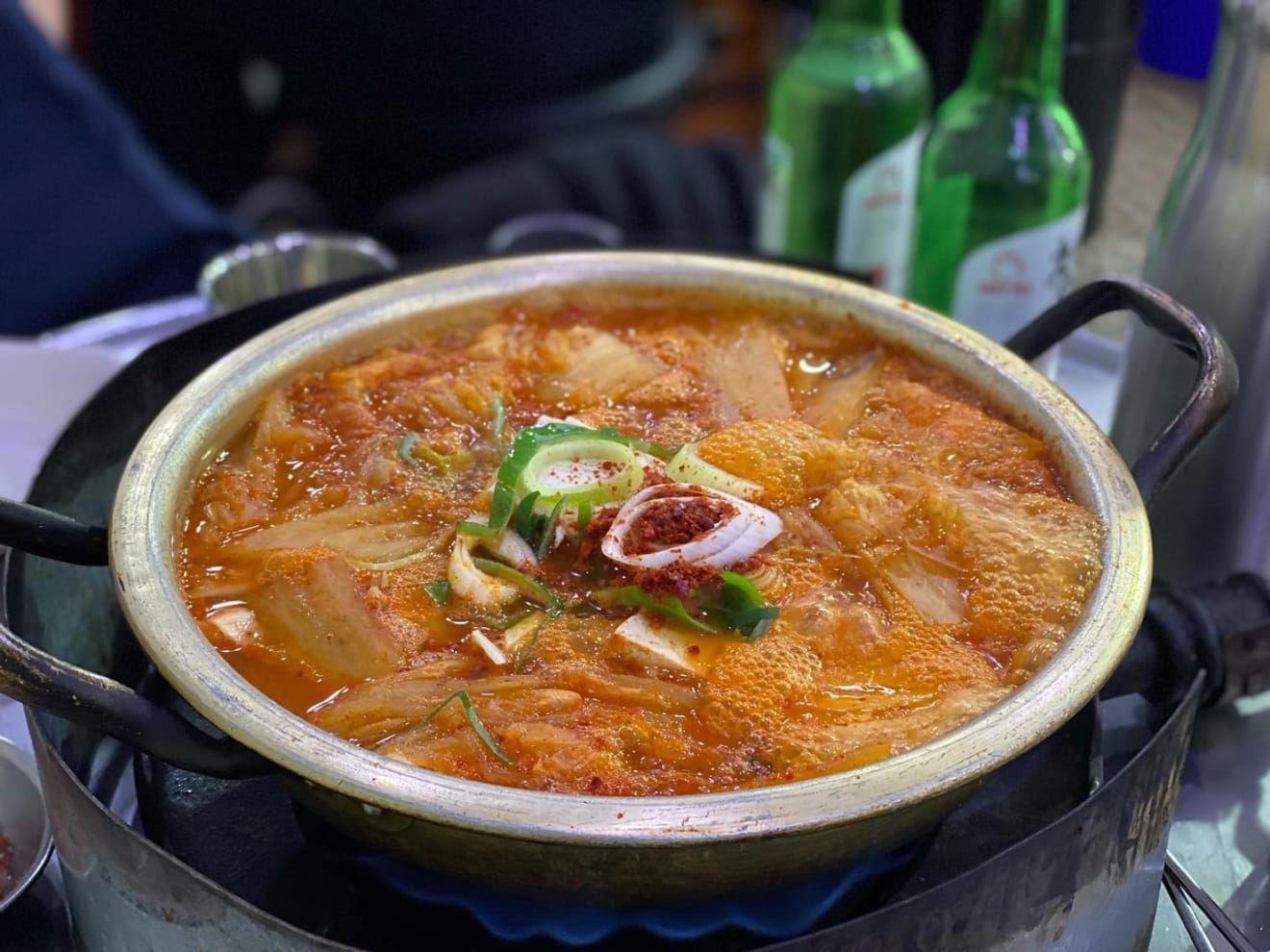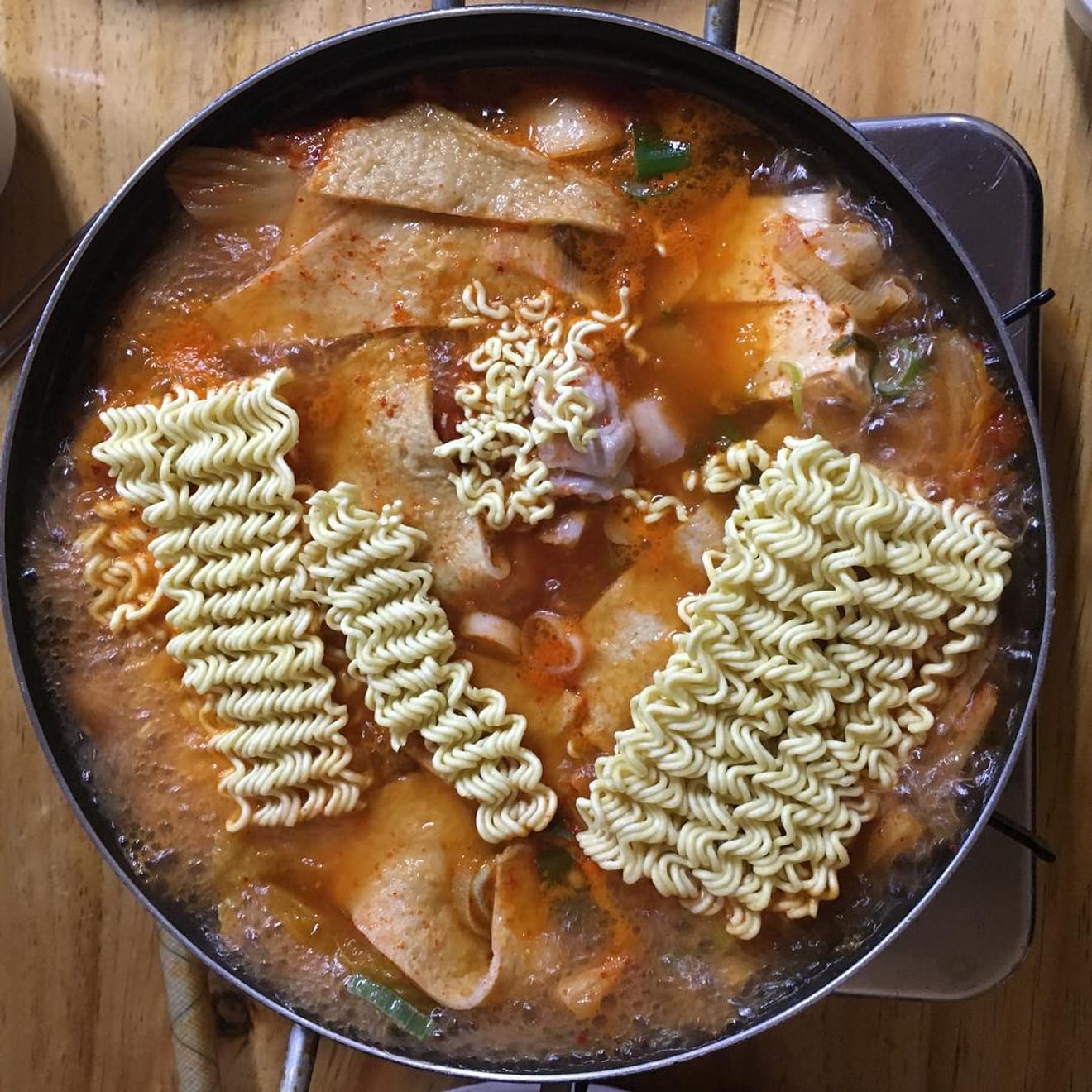Subject
- #Korean Cuisine
- #Kimchi Jjigae
- #Ingredients
- #Cooking Method
- #History
Created: 2024-06-09
Created: 2024-06-09 09:34

The history of kimchi jjigae is closely related to the history of kimchi. Kimchi is a dish with a history of over 1,500 years in Korea, and it was during the Joseon Dynasty that kimchi took on its current form. Among the various dishes made with kimchi, kimchi jjigae has become a staple on Korean tables due to its flavor and nutritional value.

Several basic ingredients are needed to make kimchi jjigae. The most important ingredient is, of course, kimchi. It's common to use aged kimchi, as it tends to produce a richer flavor. Other necessary ingredients include pork, tofu, onion, green onion, garlic, and more. While each household may use slightly different ingredients, these are the basic ones used.
Kimchi: 300g of aged kimchi
Pork: 200g
Tofu: Half a block
Onion: 1
Green onion: 1 bunch
Garlic: 3 cloves
Red pepper flakes: 1 tbsp
Doenjang (Korean soybean paste): 1 tsp
Soy sauce: 1 tbsp
Salt: A pinch
Water: 3 cups
The method for making kimchi jjigae is relatively simple, but a few tips are needed to bring out the best flavor.
Preparing the ingredients: First, cut the pork into bite-sized pieces, and chop the onion and tofu into desired sizes. Cut the kimchi into bite-sized pieces and set aside.
Making the broth: Pour water into a pot, add broth ingredients (e.g., anchovies, kelp), and bring to a boil. Once the broth boils, remove the solid ingredients.
Stir-frying the pork: Add the pork to a pot and stir-fry it with a bit of salt and pepper for seasoning. Once the pork is almost cooked, add the kimchi and stir-fry together.
Boiling the stew: Pour the broth over the stir-fried kimchi and pork, and adjust the seasoning with doenjang, red pepper flakes, and soy sauce. Then, add onion and tofu and bring to a boil.
Finishing: Once all the ingredients are cooked through, add the green onion and garlic, simmer for a little while longer, and then turn off the heat.
Kimchi jjigae is not just a simple dish but a food deeply connected to the lives of Koreans. Kimchi jjigae is a common home-cooked meal and an indispensable part of Korean daily life. Also, kimchi jjigae is a dish made using kimchi, a traditional Korean fermented food, allowing you to enjoy the health benefits of fermented foods.
Another charm of kimchi jjigae lies in its diversity. Each household and region prepares kimchi jjigae in a slightly different way, resulting in a variety of flavors. Some households add tuna, while others add seafood to enhance the freshness. This way, kimchi jjigae is a dish that can be endlessly modified to suit individual preferences and creativity.
Kimchi jjigae is not just a meal but embodies Korean sentiment and culture. The time spent gathered around a table with family, enjoying kimchi jjigae, strengthens the bond between family members. Kimchi jjigae is also a dish that allows you to enjoy diverse flavors throughout the four seasons by using seasonal ingredients. For instance, aged kimchi is used in winter for a deeper flavor, and fresh ingredients are used in summer to create a refreshing taste.

Located in Jung-gu, Seoul, Eunjujung is a place where you can enjoy kimchi jjigae for lunch and kimchi jjigae with grilled pork belly for dinner. Their signature dish, Ssam (wrapped in lettuce) Kimchi jjigae, boasts a deep flavor from aged kimchi and domestic pork, enjoyed with various side dishes for wrapping.
Address: 32, Changgyeonggung-ro 8-gil, Jung-gu, Seoul

Located in Seocho-gu, Jangkkobang, whose name means 'Jangdok' (earthenware pot for fermented foods) in the Jeolla dialect, is famous for its kimchi jjigae made with 3-year-aged kimchi. The kimchi used here is made with locally grown produce from Jinan, Jeollabuk-do, resulting in a deep and rich flavor.
Address: 364, Hyoryeong-ro, Seocho-gu, Seoul

Located in Seoosomun-ro, Jung-gu, Janghowang Gopchang is known for its gopchang (tripe) dishes, but its kimchi jjigae is also very popular. It features pork and generous portions of kimchi, creating a spicy and savory taste. Adding ramen noodles is also recommended.
Address: 83, Seoosomun-ro, Jung-gu, Seoul

Located in Seodaemun-gu, Hanokjib is a famous kimchi jjigae restaurant mentioned in the comic 'Sikgak' (Gourmet). The kimchi jjigae, based on beef bone broth, features aged kimchi and pork, creating a deep and refreshing taste. Don't forget to add the complimentary ramen noodles.
Address: 178, Naengcheon-dong, Seodaemun-gu, Seoul

Located in Bukgajwa-dong, Seodaemun-gu, this restaurant lives up to its name, having no signboard. However, it has become famous by word of mouth, and its kimchi jjigae is loved by many for its rich and deep flavor. Please note that it operates only from 11:30 AM to 3:00 PM.
Address: 31, Jeungga-ro 32-gil, Seodaemun-gu, Seoul
Comments0